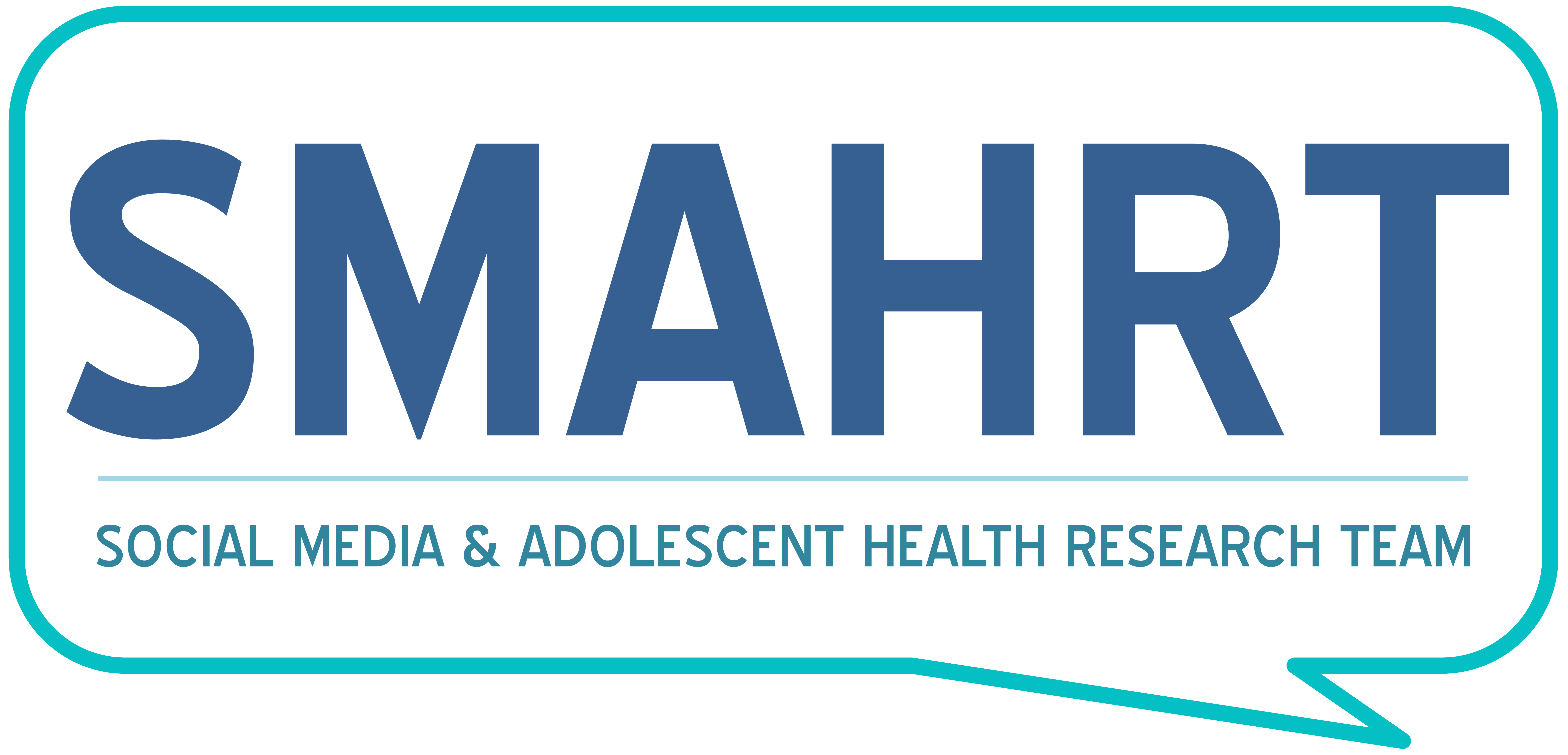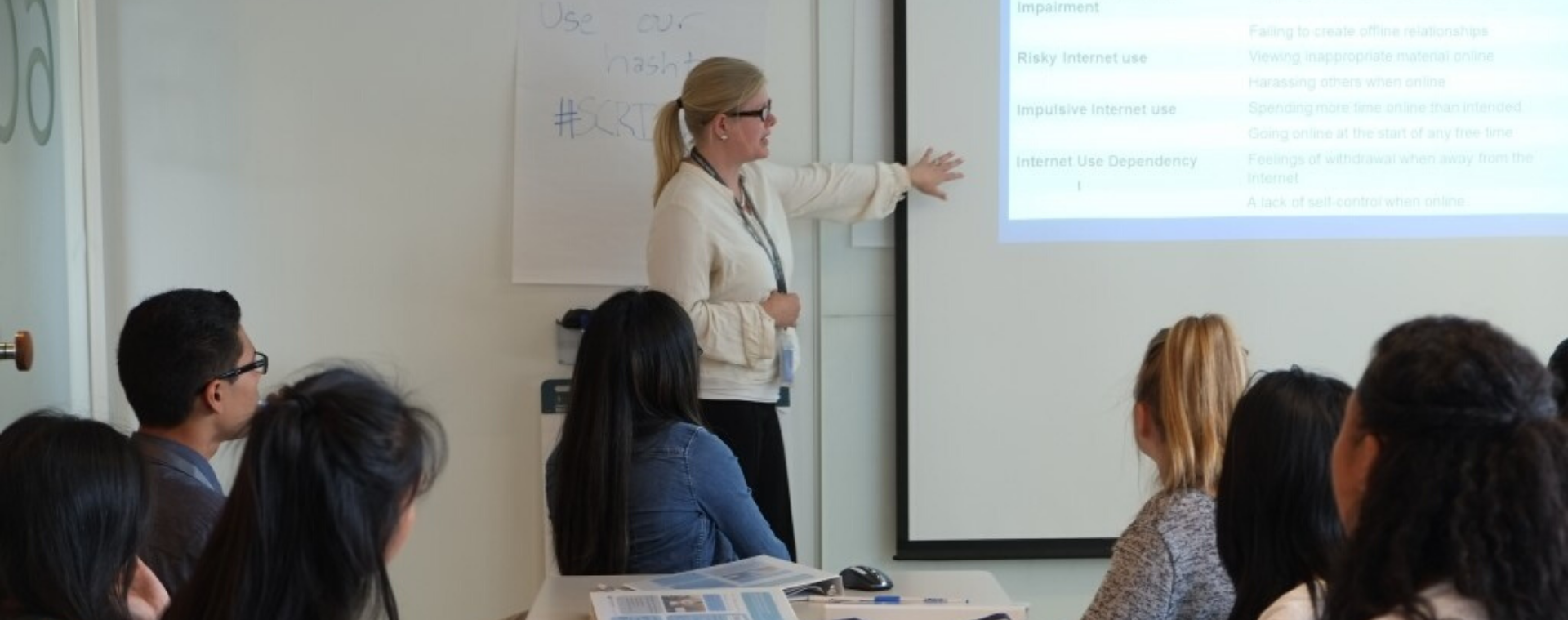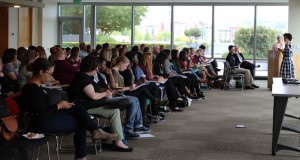2016 SMAHRT Conference: Social Media@Work
How organizations can use social media to connect, engage, educate and promote positive youth development
Thank you all event attendees and staff for making SMAHRT Conference 2016 a huge success!
The 2016 SMAHRT conference was the second conference SMAHRT has held. The conference took place on June 28-29, 2016. This 2 day conference aimed to engage and educate every member of our community, from health care providers and researchers to educators and parents.
The conference was held at Seattle Children’s Research Institute’s downtown offices. It covered a variety of topics related to positive youth development and technology. Sessions focused on cyberbullying, problematic internet use, social media in schools, community organizations and their use of social media to connect to teens, and the applications of social media in research.
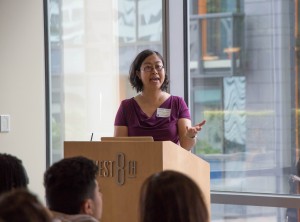
Day 1: Adolescents and Social Media
The first day of the conference focused on how youth use social media, and varying health implications due to this use, cumulating to an “Appy Hour” poster presentation and app demonstrations. Sessions included:
- Cyberbullying and social media
- How social media “works” for youth
- Problematic internet use
- Apps in healthcare
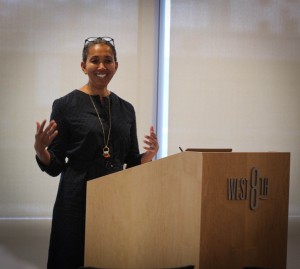
Day 2: Social Media and Education
The second day of the conference focused on how social media can be utilized to educate and be an outlet of heath communication. Session included:
- Social media in health interventions
- Media mentorship
- Social media to communicate health messages
- Social media and mental health
PDF version of full event agenda can be accessed here: SMAHRT Conference 2016 Agenda
Conference speaker Dr. Scottye Cash connects social media and social work

On June 28-29, the SMAHRT will hold its 2016 conference on SocialMedia@Work. There’s a long list of speakers coming to the conference, many of whom are dedicated to research on how social media affects adolescent health. Among these speakers is Dr. Scottye Cash, an Associate Professor of Social Work at Ohio State University, who specializes in two areas of research: mental health and social media among adolescents and child welfare. Most recently, Dr. Cash traveled to Australia, where she was introduced to different approaches to mental health literacy and how to improve interventions for those dealing with depression and suicide. Australia has more initiatives on mental health literacy to promote help seeking for those with anxiety, depression, and suicide. Australia uses a wide range of methods to promote mental health support and literacy. Some of their methods include social media campaigns, billboards, posters at bus stops, signs on sides of trams and buses, and posters in restrooms. The United States, however, hasn’t capitalized on similar methods to disperse information. Upon her return from down under, Dr. Cash is working with organizations in Australia to determine how we can bring Australia’s best approaches and interventions to the United States and tailor interventions to the needs of Americans.
Dr. Cash is also continuing her research, along with Erin Klumb and Dr. Megan Moreno, on how adolescents use Facebook to talk about their feelings of depression and suicide and how their friends subsequently react to those posts. Some of the results have been less than comforting, with friends commenting “stop being sad” and “cheer up.” Dr. Cash is passionate about helping adolescents be open to talk about these sometimes taboo subjects and support others in a constructive way. “People with depression are not just people who cannot be happy,” Dr. Cash said, “there is so much people don’t know about mental health how to address it. I want to be a part of changing that dialogue!”
Dr. Cash is passionate about her work with adolescents because “of all the development and angst that adolescents have because of the social pressures and big life decisions they are constantly faced with,”. As she progressed through her career, Dr. Cash started researching the ways in which social media and adolescents correlate because of the ways in which social media became the new platform for adolescents to interact and react with all matter of topics, including depression and suicide. Since research shows that adolescents use social media to talk about personal issues, Dr. Cash is researching ways to get Facebook (e.g., the Facebook advertising side bar) to use their vast influence and social media presence to help educate individuals on depression and other mental health issues.
To learn more about Dr. Cash’s work with adolescent mental health on social media, or other social media professionals that deal with adolescents, register for the 2016 SMAHRT Conference today. Dr. Cash and numerous other researchers and community leaders will ensure that attendees walk away ready to connect, engage, educate and promote positive youth development.
Promoting Positive Youth Development with Dr. Linda Charmaraman

From June 28th to June 29th, the 2016 SMAHRT Conference: SocialMedia@Work will be held at Seattle Children’s Research Institute’s downtown offices. This year, we have a very exciting list of presenters that will speak about their work with social media. Among them is Linda Charmaraman, a research scientist at the Wellesley Centers for Women at Wellesley College and former New Connections grantee for Robert Wood Johnson Foundation. Charmaraman chose to work with adolescents because they are both an overlooked population in science and a population that can be heavily influenced—usually by their peers. While many researchers do not want to work with adolescents because, as Charmaraman states, “the period of adolescence is too complex or too late to make a difference,” Charmaraman sees only possibilities. “Adolescents have so much potential because of how their views change,” she said, “so there is room for intervention where and when it is critically needed.”
In Charmaraman’s recent national survey and interview project on media and identity, she found that social media can sometimes be a positive tool for adolescents from how they use it to reach out to others, an idea that runs counter to much of what is said about social networking sites by concerned parents and the media. “Social media actually helps adolescents explore different parts of themselves, such as their racial/ethnic identity or sexual orientation,” Charmaraman said. Charmaraman found when adolescents go online and post statuses, they are often looking for ways to connect with others both online and offline, a finding that goes against the popular notion that social media is making adolescents less social.
Research on how adolescents interact with social media can be extremely beneficial to the community. Charmaraman said research can teach parents and schools to use adolescents’ knowledge of social media in productive ways to help them make healthy choices.
Social media does not have to be an activity or topic that parents, schools, and other institutions fear. With some guidance, it can contribute to positive youth development. Charmaraman and other researchers will share their insights at the 2016 SMAHRT conference with the goal of informing the community about social media and ways organizations can use it to connect, engage, educate and promote positive youth development.
